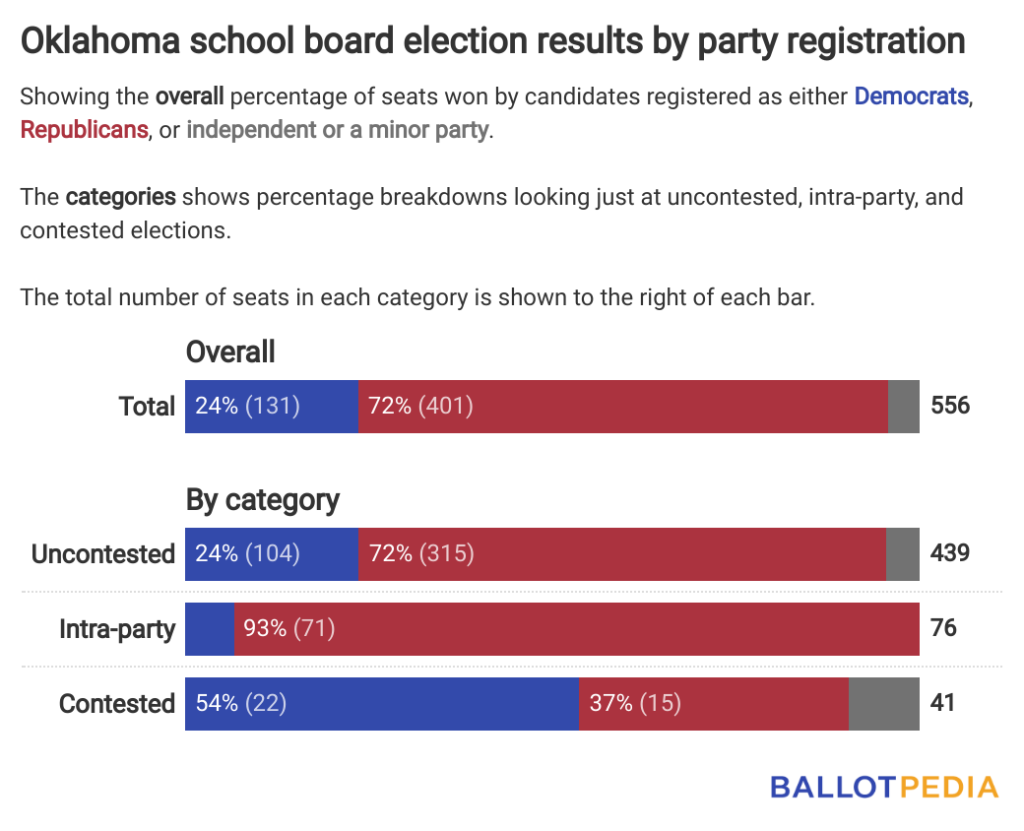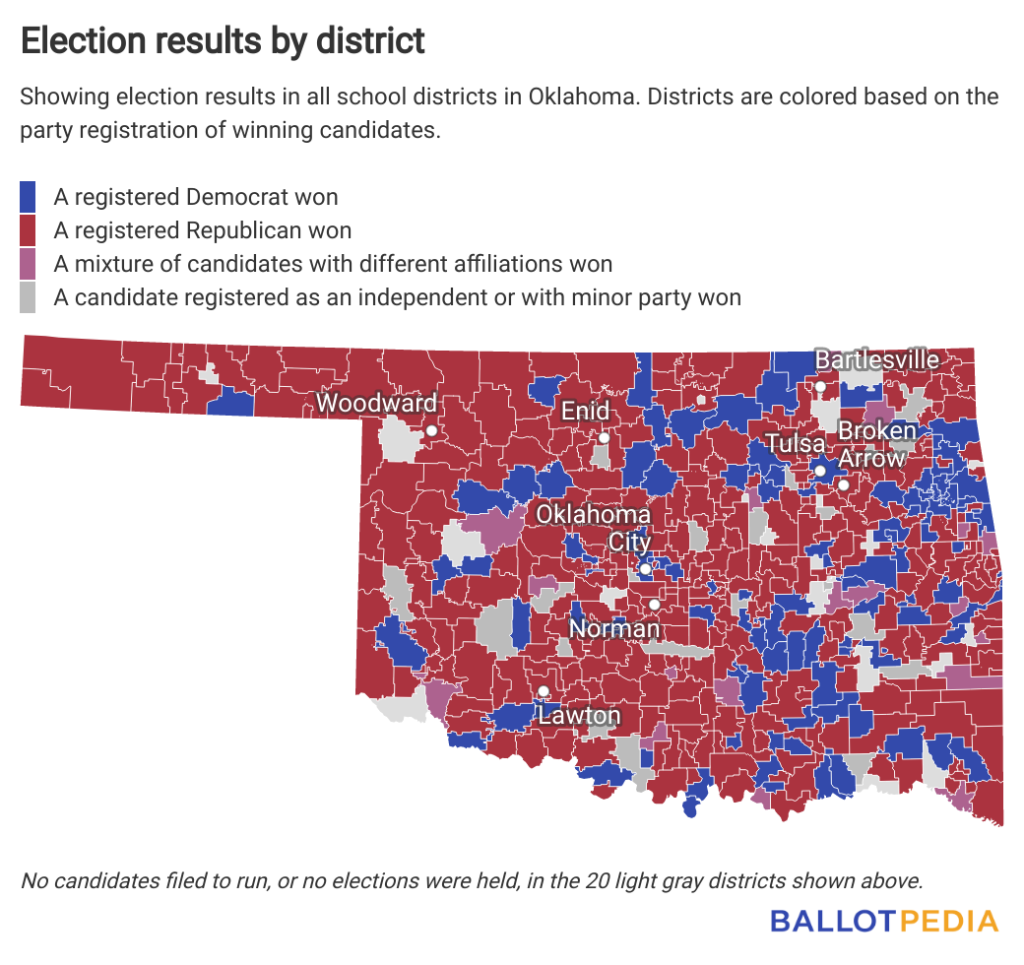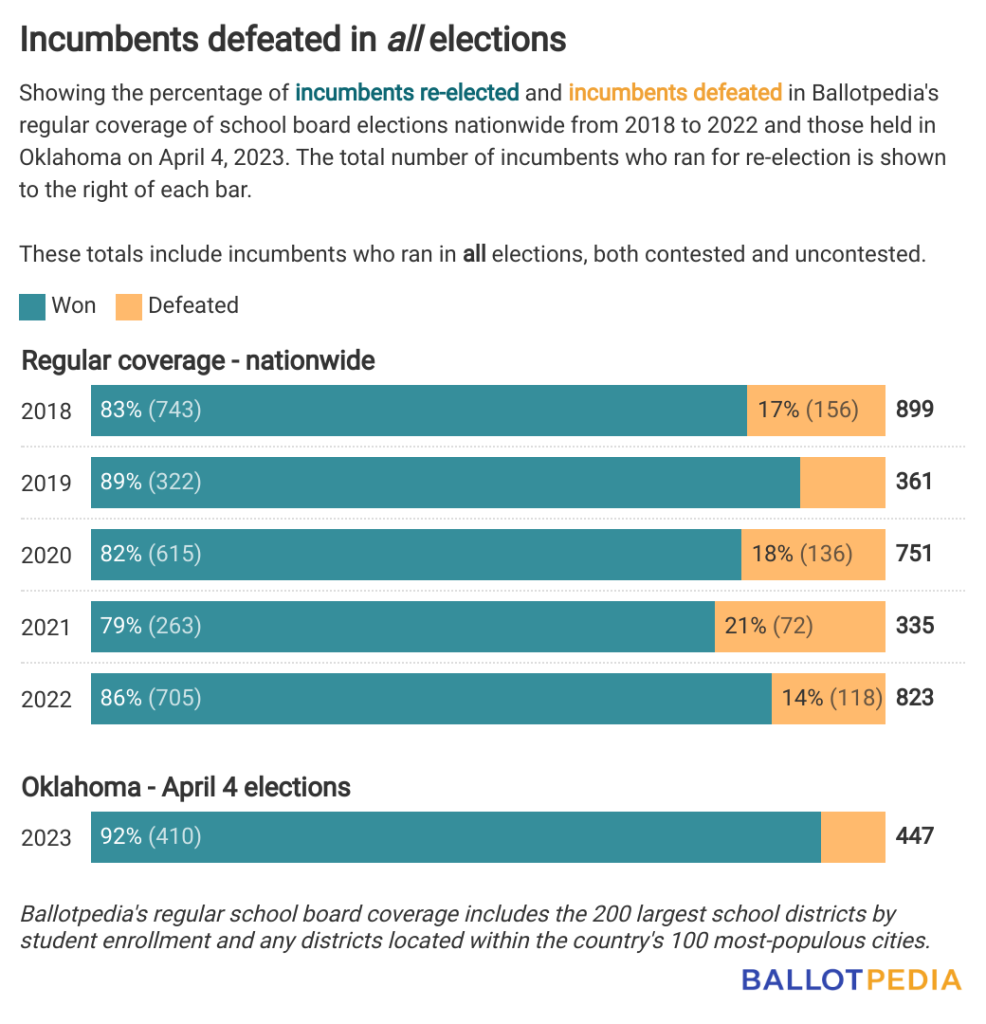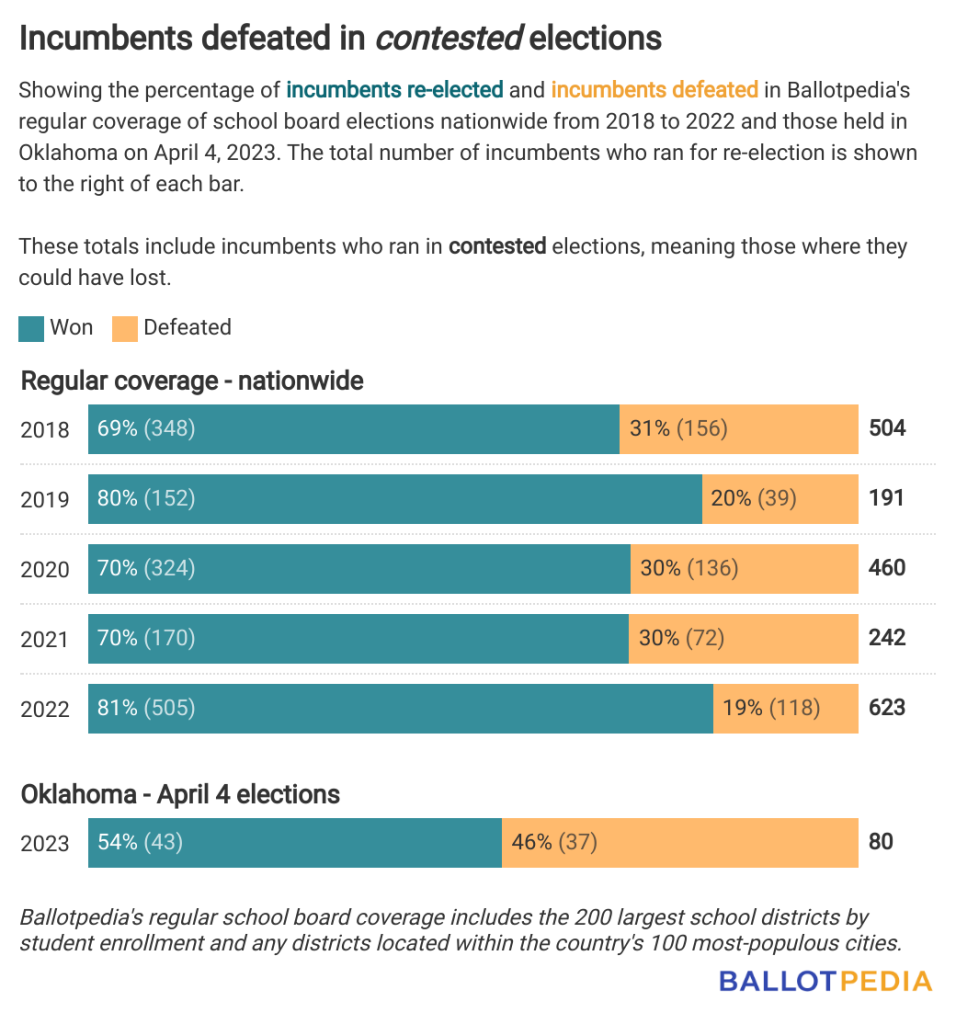Welcome to Day 2 of our deep dive into this year’s spring elections, this time with a look at Oklahoma. ICYMI, check out yesterday’s report on Wisconsin.
In total, 556 of Oklahoma’s 2,366 school board seats, around 25%, were on the ballot.
The aim of this unique, comprehensive coverage is simple: to help close the “knowledge gap” about local races and candidates, and to encourage voter participation in the process.
Welcome to the Thursday, May 25, Brew.
By: Douglas Kronaizl
This year we are covering every school board election in 10 states: Colorado, Kansas, Minnesota, Ohio, Oklahoma, Pennsylvania, South Dakota, Virginia, Washington, and Wisconsin.
Today, we’re looking at Oklahoma. Here’s what’s in store for you as you start your day:
- Registered Republicans won 72% of seats, registered Democrats won 24%
- State executives continue to endorse school board candidates
- Nearly half of all incumbents in contested elections lost
Registered Republicans won 72% of school board seats, registered Democrats won 24%
There were 556 school board seats up for election in Oklahoma this year. After the April 4 election, registered Republicans won 401 seats (72%), registered Democrats with 131 (24%), and registered independents or minor party candidates won 24 (4%).
Oklahoma’s school board elections are officially nonpartisan, meaning candidates appear on the ballot without any party labels. But it is also one of 11 states that make its file of registered voters publicly available at no cost.
We used candidate filing information and other publicly-available data to match every school board candidate with a voter in the state’s voter file, giving us full partisan data across the state.
This comes with a few caveats. The most important: many people may register to vote with one party but later find themselves more aligned with another without officially switching their registration status. This means a registered Republican in this report might agree more with policies supported by the Democratic Party or vice versa.
Still, this level of research can provide additional insights into these school board elections, which tend to fly beneath the radar.
Here’s what we found once we crunched the data.
- There were 439 uncontested elections, representing 79.0% of all seats up for election. Oklahoma is unique in that uncontested elections are canceled, meaning they never appear on the ballot. For 425 of these seats, only one candidate ran. For the other 14, there was a contest in the February primaries, but one candidate won more than 50% of the vote, winning outright and canceling the April general election.
- 76 elections were intra-party, meaning they featured candidates registered with the same political party.
- Of the 556 seats up for election, 41 (7%) were contested between candidates registered with different political parties.
- Registered Republicans won 72% of all uncontested elections and 93% of all intra-party. Registered Democrats won 54% of all contested elections.
The chart below shows the overall total in terms of seats won by party registration status as well as breakdowns by the different categories of election types:

Voters in 110 districts (22% of those holding elections) elected only registered Democrats compared to those in 341 districts (70%) that elected only registered Republicans.
Voters in 18 districts (4%) elected candidates with different party affiliations, and voters in 21 districts (4%) elected only independents or minor party candidates.

State executives continue to endorse school board candidates
Four state executive officials in Oklahoma endorsed school board candidates in this year’s elections, continuing what we first started to notice last year. These four officials endorsed three candidates in three races.
Gov. Kevin Stitt (R), Lt. Gov. Matt Pinnell (R), and Supt. of Public Instruction Ryan Walters (R) all endorsed Jared Buswell, who was challenging an incumbent in the Tulsa School District. Walters also endorsed Julie Bentley, who was running in the nearby Bixby School District.
Commission of Labor Leslie Osborn (R) endorsed incumbent Judy Mullen Hopper in the Putnam School District.
Buswell and Bixby lost their respective elections. Mullen Hopper won.
Before last year, it was uncommon to see state executive officials weigh in on school board races. In summer 2022, Gov. Ron DeSantis (R-Fla.) endorsed a slate of school board candidates.
Additionally, we began to see candidates for state executive offices—like DeSantis’ opponent Charlie Crist (D) and Wisconsin gubernatorial candidate Rebecca Kleefisch (R)—also issuing endorsements in school board races.
Now, officials in other states are following the 2022 example.
In Arkansas, Gov. Sarah Huckabee Sanders (R) recently endorsed two incumbents in a May school board election, both of whom lost.
And earlier this year in Illinois, Gov. J.B. Pritzker (D) donated $500,000 to the state’s Democratic Party. According to the Daily Herald, these funds were meant to oppose candidates running for school board seats that “Democrats fear could be elected without much of a fight.”
Nearly half of all incumbents in contested elections lost
The large number of uncontested elections—439, or 79%—meant there was less activity in Oklahoma’s school board elections than we typically see in other states.
That extends to the number of incumbents defeated. Overall, 447 incumbents ran for re-election (80%), of which 410 (92%) won and 37 (8%) lost.
That overall loss rate is well below the average of 16% we’ve seen across school board elections nationwide over the past five years. It’s also lower than the 11% loss rate we told you about in Wisconsin yesterday.

But 82% of those incumbents who ran for re-election were unopposed in the general election, more than double the 36% rate of unopposed incumbents we’ve usually seen.
When looking just at the 80 incumbents who ran in contested elections, the loss rate increases to 46%, 20 percentage points higher than the average contested loss rate for incumbents in our regular coverage scope.


